How to properly cut Kalanchoe and form a beautiful bush?
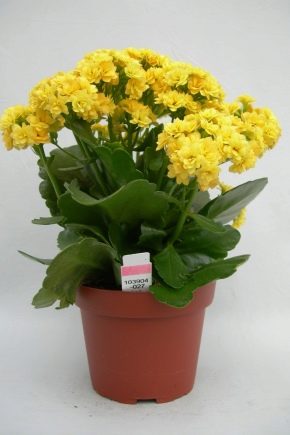
It has been known since ancient times that Kalanchoe can be useful in the treatment of many ailments. For example, it will help with ear inflammations, various skin diseases and a runny nose. However, Kalanchoe is not only a medicinal plant, but also a beautiful lush flower, which, with proper care and timely pruning, will decorate and complement your interior.
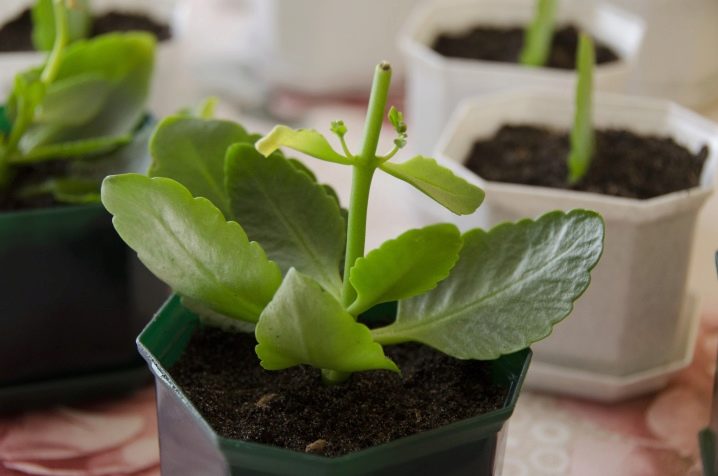
What is it for?
Indoor Kalanchoe has about two hundred different species, one of which you will definitely like. The thick glossy leaves of this succulent have a fleshy structure, and at the top of the formed bush there are many lush inflorescences. Interestingly, flowers can have different shapes depending on the species, for example, a tube or a bell. At the same time, Kalanchoe is quite unpretentious, and will be able to delight you with beautiful inflorescences throughout the year.
It must be borne in mind that in especially sunny places, the Kalanchoe quickly grows and stretches, losing its beautifully formed rounded shape... The upper new shoots begin to actively knock out of the "general order", and the old ones eventually shed their foliage and appear high above the crown. Pruning will help to restore a neat appearance to the plant. In addition, it contributes to rejuvenation and distribution of the juice accumulated in the overgrown stem to the remaining processes, that is, it makes the bush more juicy. Also, the procedure will allow the root system of the flower to develop harmoniously. By removing excess shoots and shoots, you will help the plant grow a beautiful, uniform crown, give it a well-groomed look, and also contribute to lush flowering.
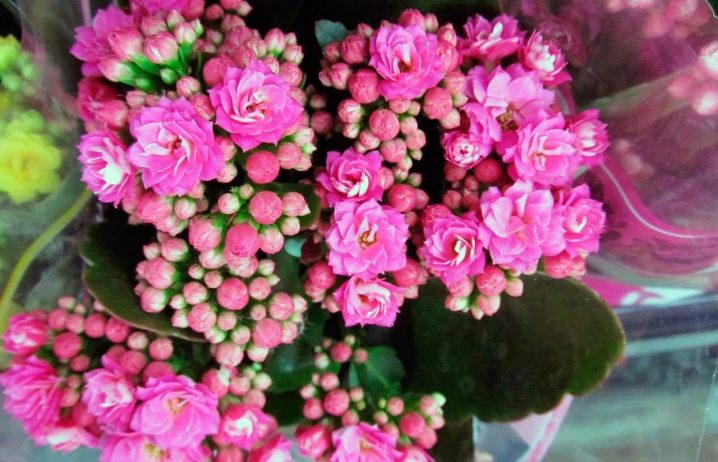
General rules
Pruning Kalanchoe consists in removing overgrown shoots, wilted buds and leaves that block adequate nutrition and healthy development of the plant.
It should be noted that there are several types of trimming:
- first;
- subsequent secondary (preventive);
- after flowering.
In the article, we will separately dwell on the nuances of each type of pruning, but first, we will consider the general component.
A well-sharpened kitchen or special garden knife is required for high-quality pruning, but a new stationery blade will do. Disinfect the instrument with alcohol in advance. Just in case, you can grab wood ash or crushed activated carbon with which you can treat the wounds that have appeared on the stem. Advice: in any case, do not pick off the leaves by hand, as this will damage the stem and further wilting of the flower.
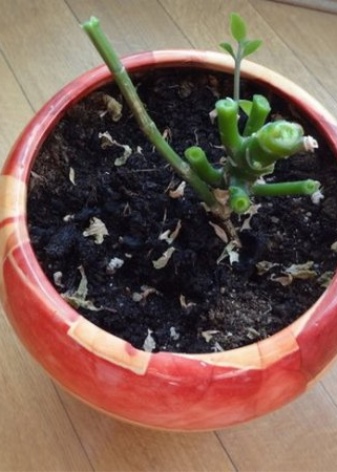
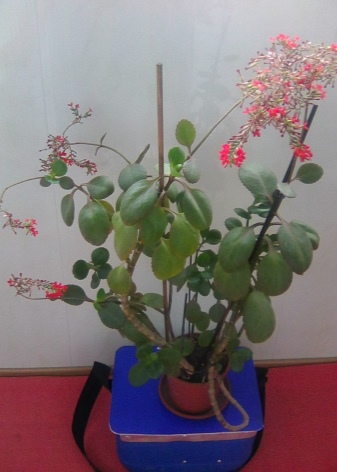
When not to carry out the procedure:
- in the first days after purchase or in a new place, as the plant needs to get used to the new environment and changed growth conditions;
- during the flowering period;
- in the acute period of the disease (dead buds and leaves are best removed 2 weeks after the succulent has fully recovered);
- 2-3 weeks after transplant;
- when exposed to direct sunlight (after the procedure, it is also recommended to protect the bush from direct ultraviolet radiation);
- in winter.

The features of pruning depend on the Kalanchoe variety. In indoor conditions, only a small part of the many known varieties can grow. It is very important to carry out the procedure in accordance with the characteristics of a particular variety in order to avoid negative consequences.
You are lucky if the Kalanchoe has bright red inflorescences, as such a plant quickly regenerates. This means that the leaves can be cut frequently and in large quantities, forming the desired crown with ease. The Blossfeld variety has such lush flowers, which, according to experienced florists, is distinguished by its vitality. The Kalandiva variety, artificially bred from the Madagascar Kalanchoe Blossfeld, also tolerates pruning very well. It is easy to recognize - the flowers of such a plant will be terry.
If your Kalanchoe flowers are yellow or white, you have a hybrid in front of you, and it will be more difficult to cut it. You cannot cut off a large number of leaves from a whimsical plant, as it can quickly wither. Be careful not to touch the stem and adjacent leaves. In the case of an inaccurate or unnecessary cut, immediately sprinkle the damaged area with wood ash. Due to the complex content and capriciousness, light hybrid varieties are bred in indoor conditions much less often.

First and subsequent cuts
The optimal time for the first pruning is spring. This procedure is the easiest and involves only the removal of the two upper leaves from each of the shoots with a sharp knife. After the procedure, new shoots will hatch in the vacated places, and leaves on them.
Now you just have to monitor the condition of the plant and timely carry out secondary preventive pruning until the crown of the succulent takes on the desired lush and rounded shape. In the future, you will need to maintain a neat appearance of the flower, preventing it from overgrowing. Remember that the preventive procedure can only be carried out between March and November.
Advice: you do not need to wait until the young leaves grow up. If necessary, trim them immediately after shaping.
Another name for pruning after flowering is cleansing. With its help, you can remove wilted leaves, buds and remaining flower stalks. The principle of the procedure remains the same: remove two unnecessary extreme shoots on the stem. Cut every flower stalk at the very base so as not to start the process of decay of the entire bush. This will create the soil for a new bloom and prevent infestation of the succulent. Remember: do not start the procedure until you are sure that the plant has completely faded.
Thanks to this cleaning of the flower, new stems will begin to grow more actively. It remains to give the plant rest, reduce watering and protect it from direct ultraviolet radiation for a month.

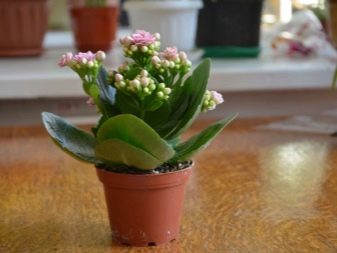
Bush formation
Shoots of decorative Kalanchoe can grow up to 50 centimeters in height, however, the appearance of such a tall succulent will be depressing. In addition to the sloppy look, the minus of the "overgrown bush" is that it will not be able to give flowers and will quickly fade.
You cannot start forming without preparation, as you risk damaging the flower. Do not strive to immediately cut off all the leaves and form the perfect roundness, give the plant time. Although the Blossfeld variety will be able to withstand the "hemp" condition, a flower cut this way will look worse than an "overgrown" one.
If you missed the point, and the shoots are overgrown and bare the base, the best solution is to root them separately. Kalanchoe shoots take root well. Tip: Root ten-centimeter cuttings in a circle around the edges of the pot. This will lay the foundation for their correct growth and allow you to grow a beautiful lush bush. And the basic rule of forming a beautiful bush after pruning: say no to bright direct light. Otherwise, your plant will instantly outgrow, stretch and lose its desired shape.
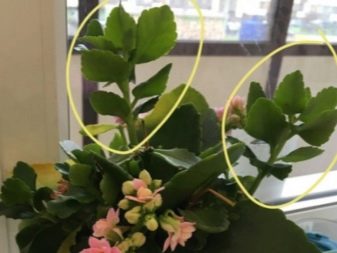
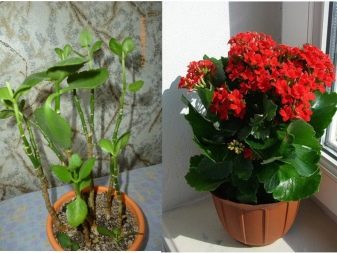
Pinching subtleties
If you keep a close eye on the flower and prevent overgrowth, serious pruning will not be necessary. As soon as ugly shoots begin to appear above the crown of the shrub, they need to be pinched off, that is, a couple of upper leaves are removed.Try to carefully monitor the shoots and prevent them from overgrowing, thus, further cuts will be less painful for the flower, however, the need for a full-fledged procedure will not disappear completely.
In addition, timely pinching will make the adult bush denser, branched and rounded, and the rooted cutting will help bloom. To do this, it is necessary from time to time to pinch the emerging shoots of a young plant over the fourth leaf.
Tip: the first pinching should be done as soon as the succulent reaches your home. This will set the correct direction for the growth of the flower and lay the foundation for a lush crown. The first pinching method is simple: it is enough to remove two or three upper leaves from each branch to ensure the growth of young shoots. Flower growers do not recommend pinching the plant during the flowering period.
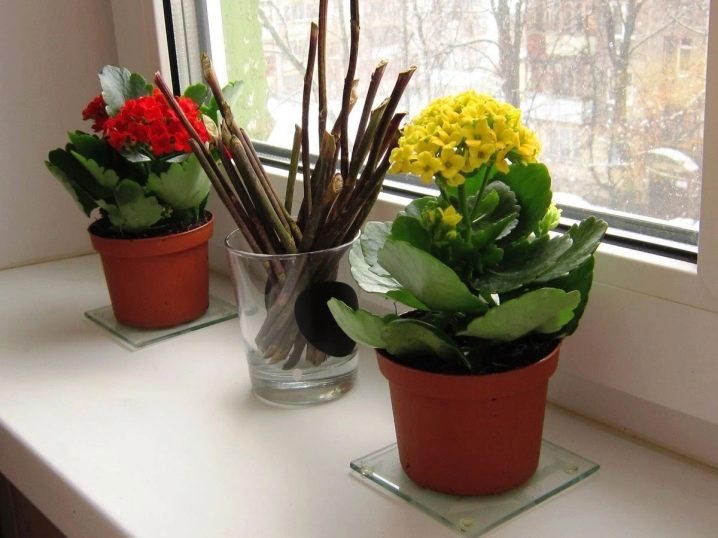
Home care
Conditions for keeping a flower during dormancy, lasting about a month, implies:
- limited watering to once every three weeks;
- being in a dark place without sunlight;
- maintaining the temperature up to + 16 ° C.
For indoor bush, diffused light is best, so you need to remove it from the sunny windowsill. On particularly hot days, additional humidification can be connected by spraying with warm water. In summer, it is recommended to give additional fertilizing once a week (special fertilizer for succulents and cacti, sold in flower shops). For the bush, bottom watering is preferable, sharply reducing in winter.
Thus, it is imperative to take care of the Kalanchoe, but such care should not cause difficulties. With a little effort and patience, you can grow a beautiful, lush plant that is famous for its medicinal properties. And thanks to the large number of shoots that regularly ripen on the main bush, you can please your friends and loved ones with a new indoor plant.






















































The comment was sent successfully.